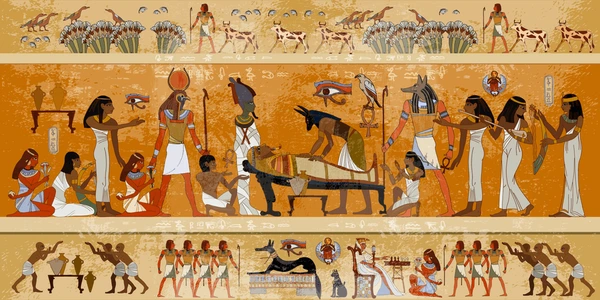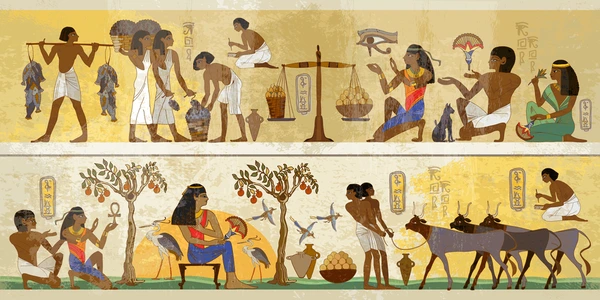Introduction
Ancient artz: a world of mystery, a peep into the imagination, beliefs, and cultures of our ancestors. Different areas of ancient arts in paintings, sculptors, pottery, and architecture depict how these forms of expression have shaped human history and continue to find themselves in modern art. Analysis into the emergence of ancient artz opens up insights and timeless messages brought by them about the societies that made them.

The Origins of Ancient Artz
Ancient artz trace their earliest roots back to the prehistoric period. Roots can be traced to Europe within cave painting, such as Lascaux and Altamira, where some of the earliest known examples of ancient artz reside. These kinds of animal and human depictions often offer a window into the lives of early humans. They would not simply be decorative; they were a means of communication, ritual, and a passage to the spiritual world.
Prehistoric Art
1. Cave Paintings: The cave paintings of Lascaux, dating around 17,000 years old, depict an elaborate decoration of animals including horses, bison, and deer. This art is known to have been of some ritual importance, perhaps as part of a rite of passage or hunting celebration.
2. Venus Figurines: The Venus figurines found all over Europe are female figures and were seen as a symbol of fertility and womanhood. These small statues signify the part that women played in ancient cultures and the manner in which they ensured life continued.
Ancient Civilizations and Their Arts
With time, human cultures changed so did their forms of art. Every culture gift its colour and themes it had to the world of ancient arts.
Ancient Egypt
Artistic characteristics: Ancient Egyptian art can be characterized as symbolic, and then continues to relate strictly to form. The artists focused on the following themes: the divine, the afterlife, and the pharaohs.
1. Hieroglyphics: This is one of the earliest methods of writing that takes aspects from both logographic and alphabetic forms, then it was used for religious texts as well as monumental inscriptions. This hieroglyphics played a great role in preserving the culture’s mythology and history.
2. Sculture and Statues: The gigantic statues of the pharaohs and gods, such as Great Sphinx of Giza, were created to project power and divinity. Such sculptures commonly featured idealized proportions that represented an eternal afterlife.

Ancient Greece
Artistic Characteristics: Ancient Greek art remained focused on beauty, proportion, and the human form. It actually gave way to these traditions in Western art.
1. Pottery: The Greek pottery was most predominantly known for its mythological scenes and daily activities through the black-figure and red-figure techniques. The ideas they are conveying in those vessels are not just the concepts of function or usability but they also carry with the concepts of the story.
2. Sculpture: The Greeks excelled in sculpture, capturing gods and athletes with remarkable lifelike realism. Notable works include the iconic Discobolus and Venus de Milo. Later, Michelangelo’s David exemplified Renaissance mastery. The Parthenon’s friezes remain a pinnacle of Greek cultural achievement.
More read : Nhacaiuytin226.Com
Ancient Rome
Artistic Features: Roman art was largely influenced by Greek art but with a stronger emphasis on realism and portraiture.
1. Mosaics: The Romans excelled at mosaic art, crafting intricate images and scenes using small, colored glass pieces or stone, often displayed in public spaces and villas.
2. Architecture: The Romans were great engineers as seen in the construction of aqueducts, amphitheatres, and triumphal arches that served as monuments demonstrating their power and ingenuity.
Significance of Ancient Artz
Ancient artz serve as an important historical record reflecting values, beliefs, and day-to-day lives of the civilizations that produced them. It is able to explain social structures, religious practices, and cultural priorities of ancient peoples.

Cultural Reflection
It is in art, then, that a society sees itself. Themes and subjects artists chose revealed to posterity what was important to them. Egyptian art exhibits deference to gods as an innate religious sense in that civilization; Greek art, by concentrating on human beauty, embodies the centrality of man.
Technological Innovations
The time and interest by humans to invent new techniques as exhibited in ancient artz showcase this. The evolution of perspectives as developed painting to newer styles of sculptures, the invention will lay a foundation that establishes further artistic phases.
The Lasting Impact of Ancient Artz on Modern Creativity
Ancient artz continue to inspire modern artists and movements. Themes, techniques, and materials used in ancient art appear in different contemporary artistic expressions.
Revival of Classical Themes
The Renaissance could also be known as a resurgence that depicted the revival in ancient Greek and Roman art. Many artists like Leonardo da Vinci and Raphael found their inspirations in classical themes but focused more on humanism and naturalism.
Contemporary Interpretations
While there are many modern artists who interpret old art forms, examples of contemporaries sculptors using traditional techniques while taking into consideration the modern materials it becomes an interaction between the past and the present.
Preservation and Study of Ancient Artz
Pre – servation of the ancient arz is the preservation of our cultural heritage; archaeologists, historians, and conservators work hard to keep these treasures for future generations.
Archaeological Discoveries
Discoveries through excavations throw more light on ancient civilizations through new artworks and artifacts. The discovery of Pompeii, for example, has shed light on daily life in ancient Roman times, their arts, and architectures.
Museums and Exhibitions
Museums have played a crucial role in the preservation and exhibition of ancient artz. Large collections held by institutions such as the British Museum and the Louvre make these treasures open to public appreciation of the culture and art of ancient civilizations.
Challenges in Preserving Ancient Artz
Despite the seriousness of the preservation of ancient artz, many challenges still exist. Major threats come in the form of environmental factors, human activity, and conflict to cultural treasures.

Environmental Threats
Natural factors such as erosion, pollution, and climate change can damage ancient artes. Therefore, conservation of sites from environmental destruction is necessary for preservation.
Theft and Lootings
War and political unrest around the world has witnessed massive lootings of archaeological sites. The world needs concerted international action against trafficking and ethical collection practices to save ancient art.
Conclusion
Ancient artes define man’s creativity, beliefs, and hope. It binds us to our past, teaching valuable lessons about their way of living and cultures. With all the further exploration and care of these artistic treasures, we pay tribute to the legacies of old civilizations and let their stories live on forever. In fact, by learning and being aware of ancient artz, we can engage ourselves with our rich human history and creativity.
Must Read: Loaded Tea
Ancient Artz FAQs
1. What are the ancient artz?
Ancient artz or creations are the products of early mankind’s artistic expressions, paintings, sculpture, ceramics, and architectural structures or edifices that give the views of the culture, spirituality, and society during these periods.
2. What are some of the earliest forms of ancient art?
Some of the earliest forms include cave paintings such as those seen at Lascaux and prehistoric figurines such as the Venus figurines, which date back thousands of years.
3. In what ways did early human civilizations utilize art?
Art served a variety of purposes, such as religious rituals, telling stories, political propaganda, and acts to preserve cultural heritage.
4. Identify some examples of ancient Egyptian art
Hieroglyphics in the tombs, giant statues of pharaohs, and intricate reliefs on the walls of temples.
5. How did ancient Greek art inform later art periods?
Ancient Greek art celebrated beauty and humanism, anchoring the Renaissance and all later art movements into proportion, perspective, and the human form.


